


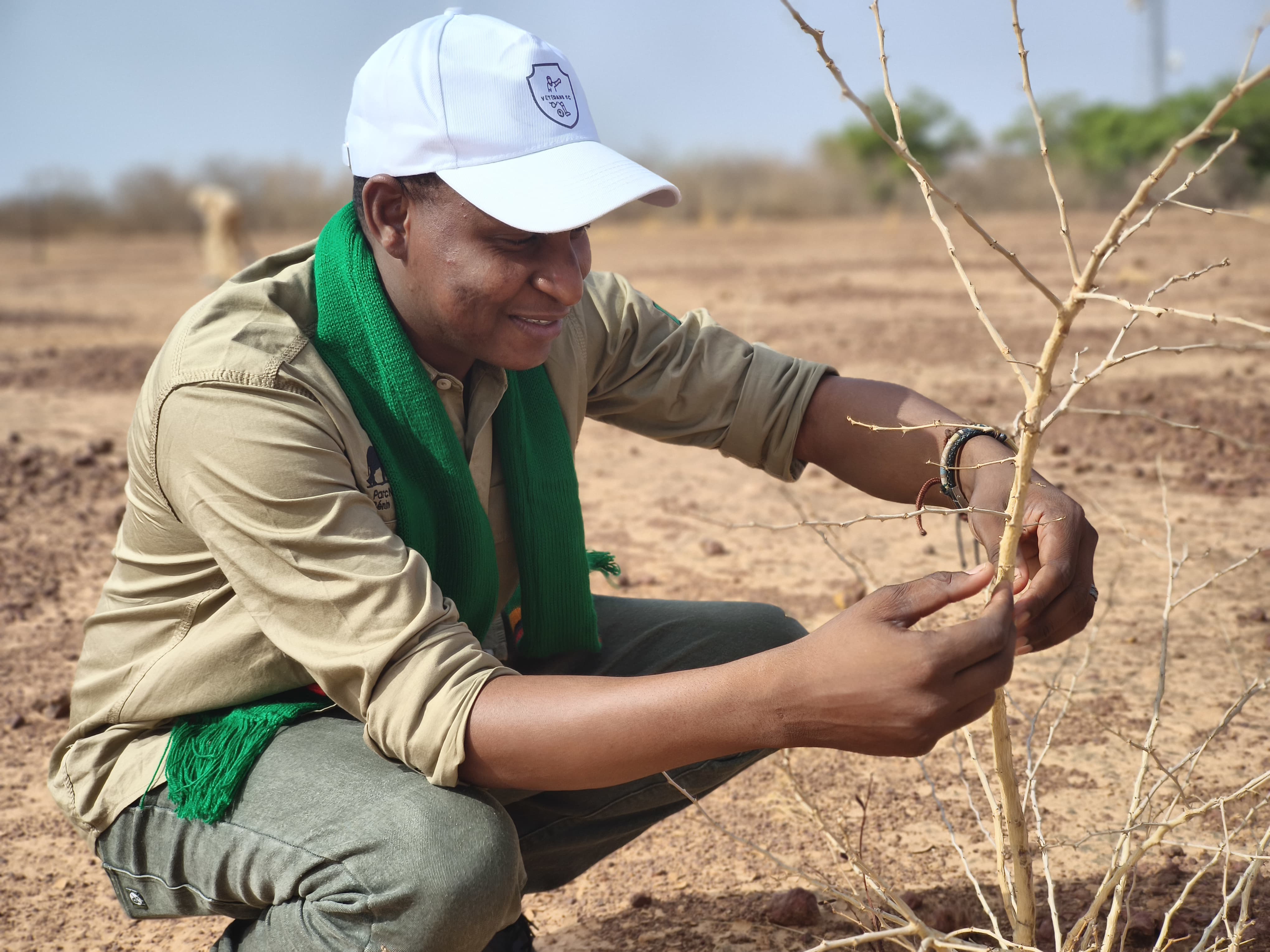
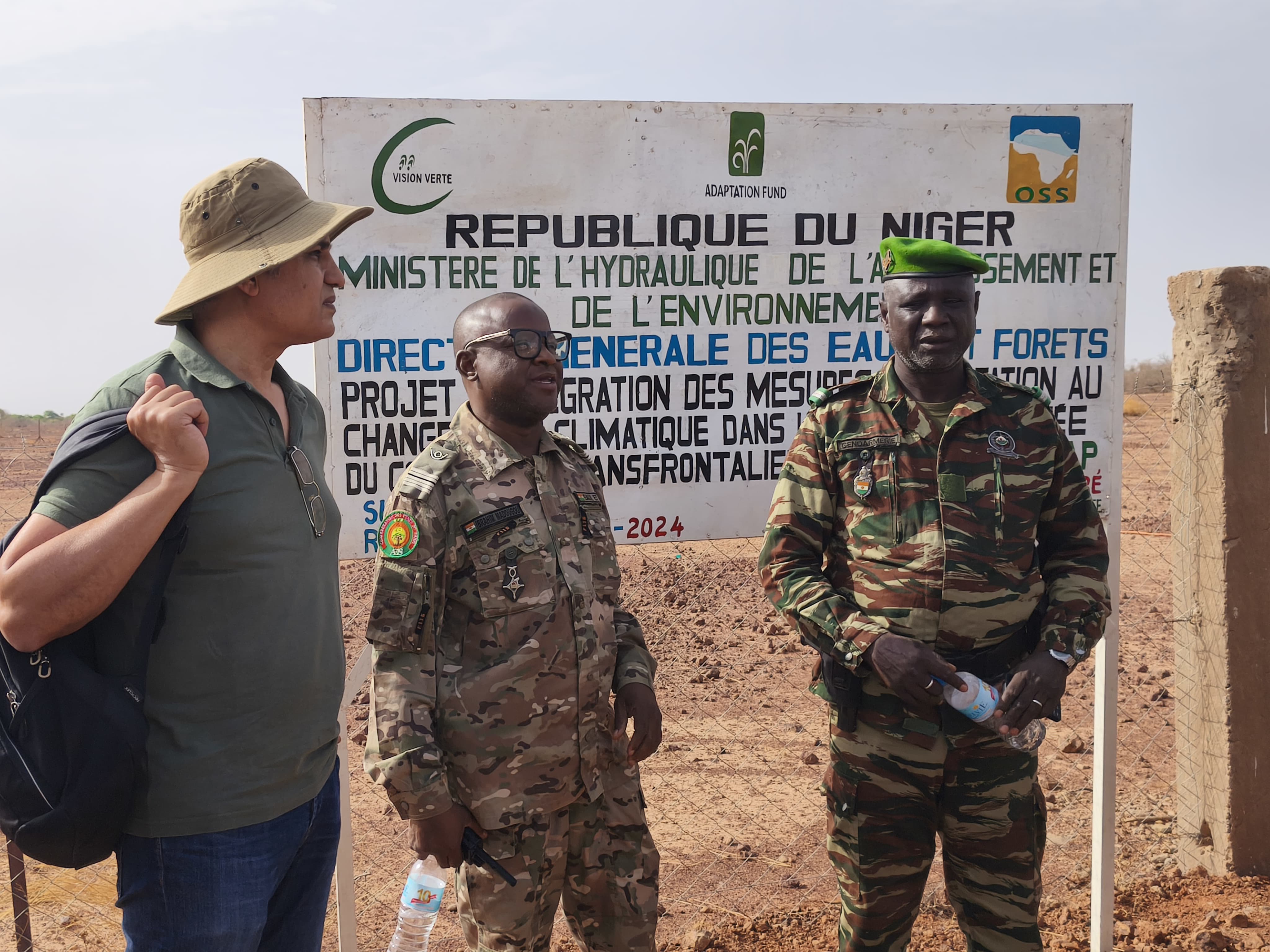
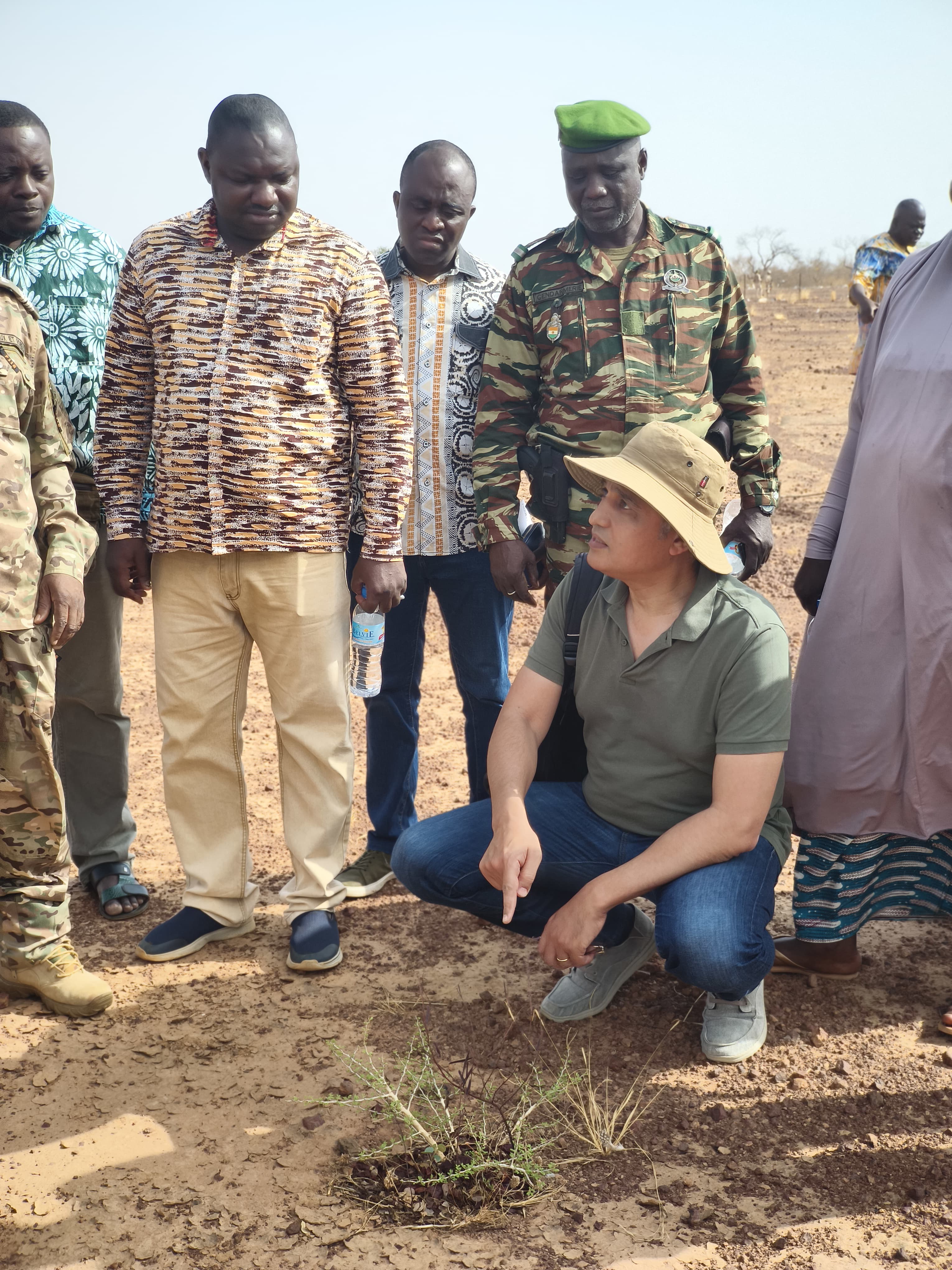
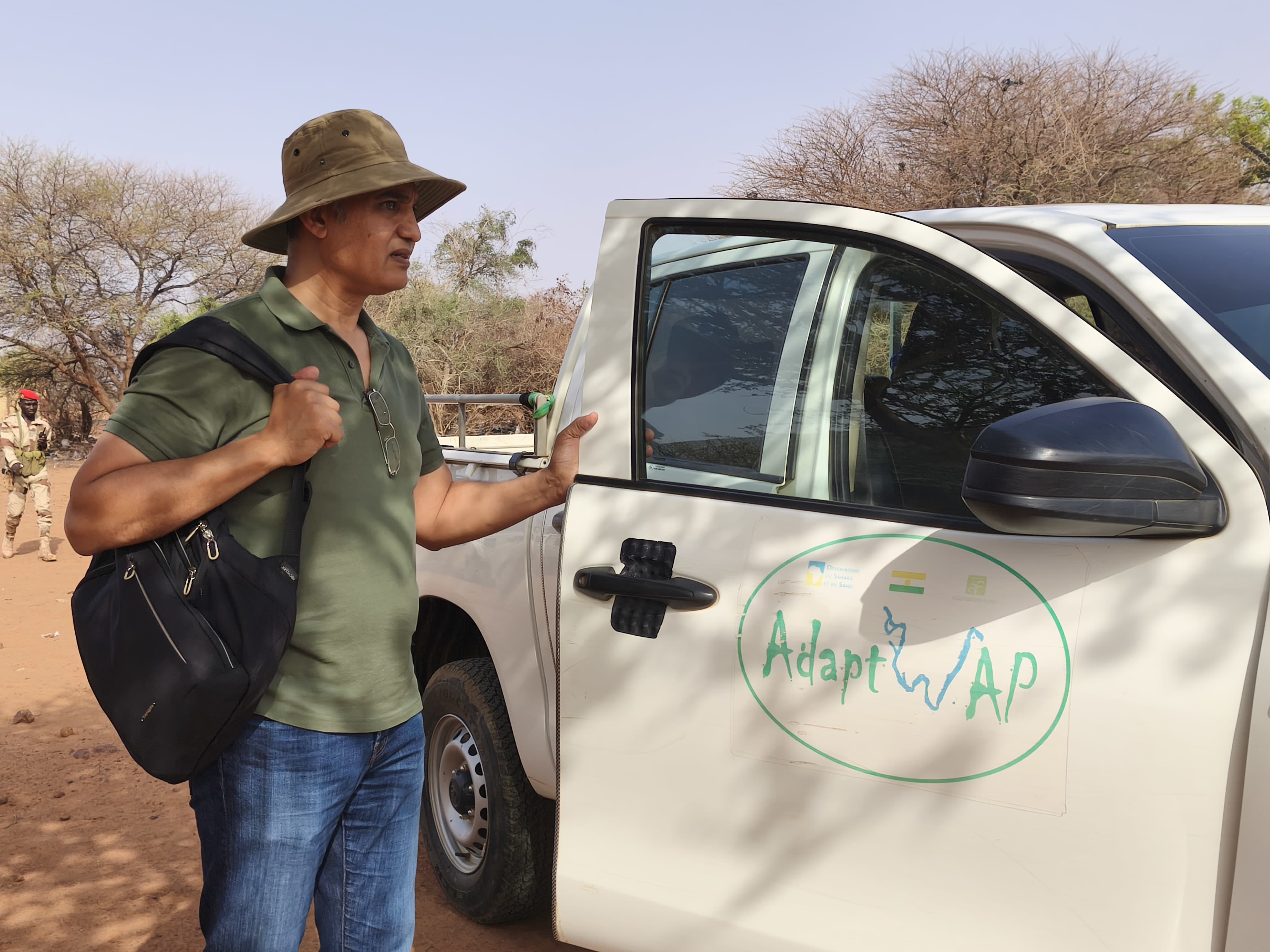
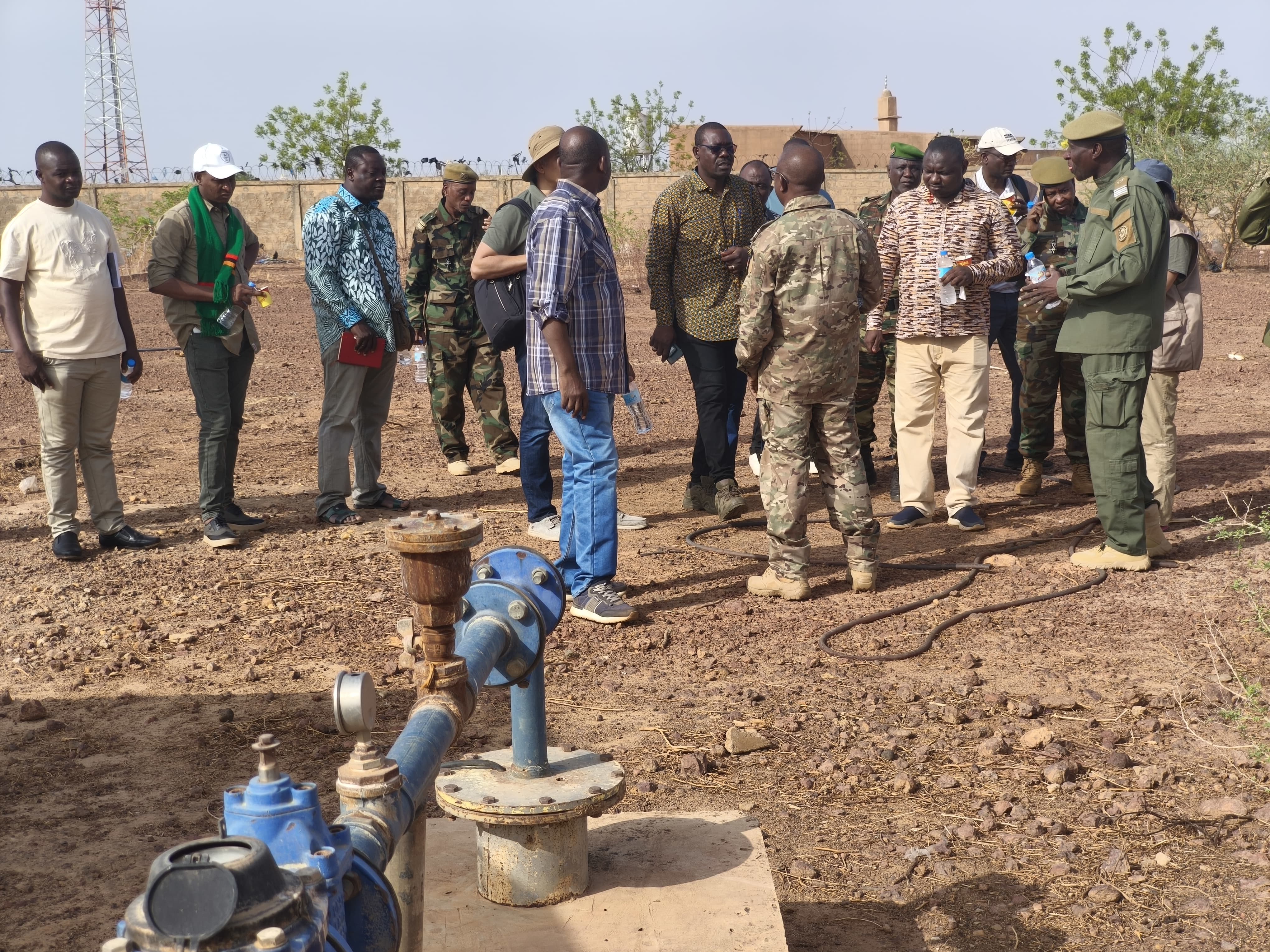
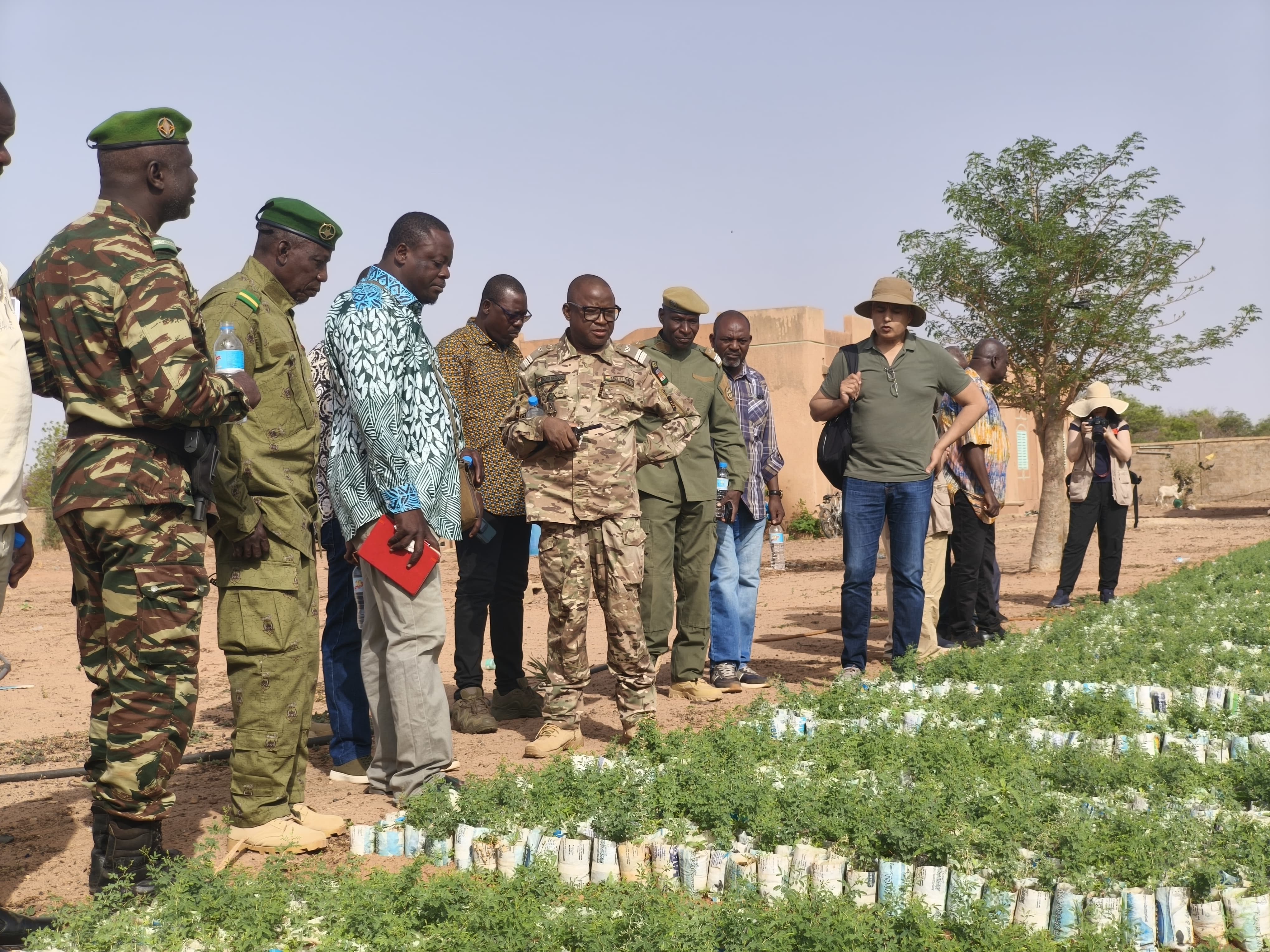
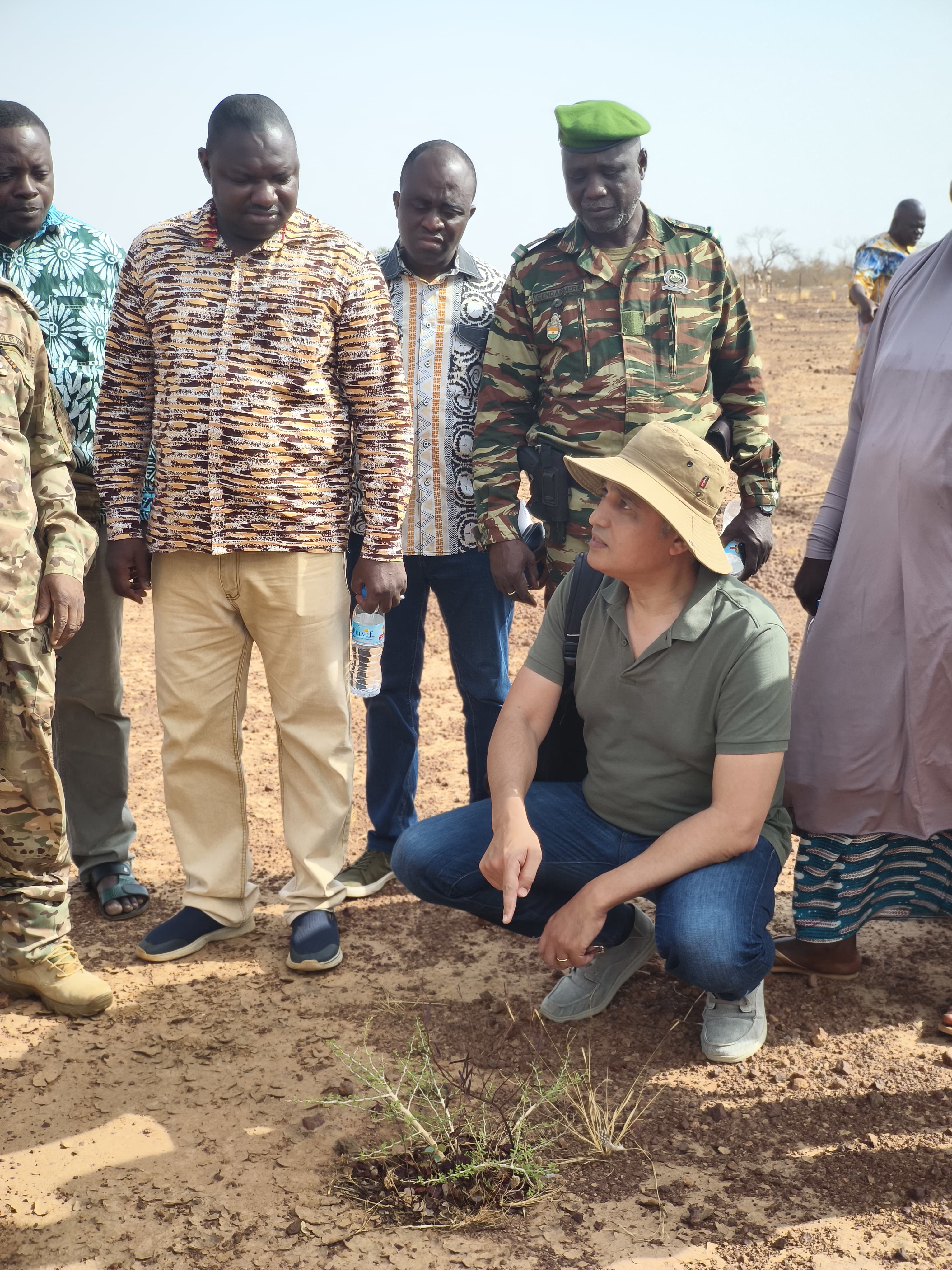


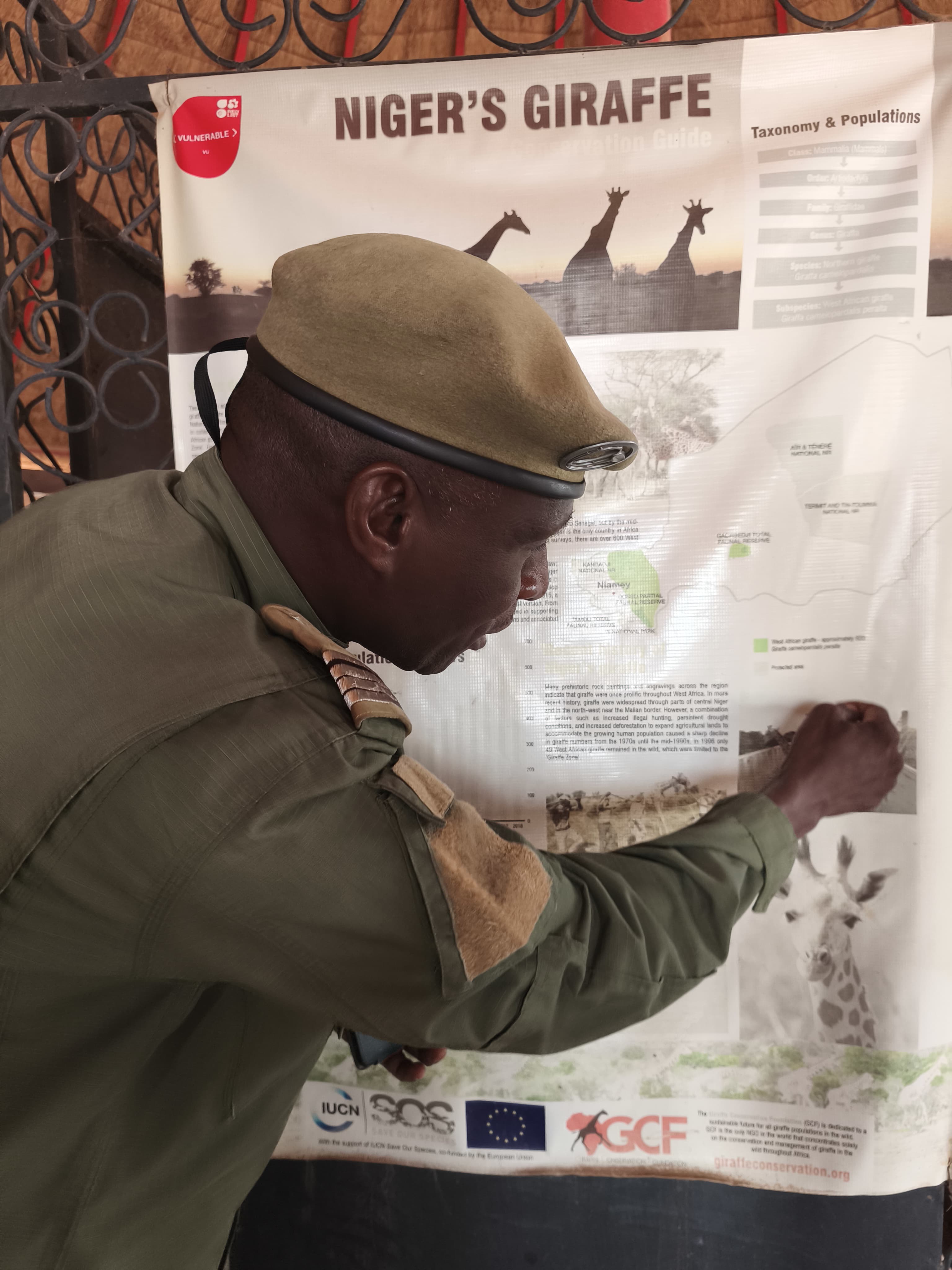
AdaptWAP Project: Representatives of the three W-Arly-Pendjari complex countries visit climate change adaptation achievements in the National Natural Giraffe Reserve (RNNG) in Kouré, Tillabéri region, Niger. June 4, 2025
On the sidelines of the 6th Steering Committee meeting of the AdaptWAP Project, a field visit was organized on June 4, 2025, to the Kouré Giraffe Reserve (Réserve Naturelle Nationale des Girafes, RNNG) in the Tillabéri region. The mission brought together the OSS delegation, representatives from Benin, Burkina Faso, and Niger, as well as local authorities and technical partners involved in the management of the W-Arly-Pendjari (WAP) complex.
Located within the W Biosphere Reserve area, the RNNG is home to the emblematic species Giraffa camelopardalis peralta, representing the last remaining populations of West African giraffes. This unique natural heritage has faced severe threats from poaching and increasing human pressure (agricultural expansion, land clearing, deforestation). Additionally, the effects of climate change have further heightened the vulnerability of both the ecosystem and the communities that depend on it.
The visit formed part of an initiative to share experiences and best practices among the three countries, aimed at directly observing the tangible results of interventions carried out under the AdaptWAP Project. The project’s core objective is to strengthen the resilience of communities and ecosystems in the face of intense environmental pressures.
Participants visited key installations, particularly the village forest, which exemplifies a sustainable, community-based approach to forest resource management. This approach includes reforestation activities using locally adapted species such as Senegalia senegal, contributing to soil restoration and biodiversity protection.
A key infrastructure, the water tower, supplies an artificial pond and improves access to water for both livestock and wildlife—especially giraffes.
Anti-erosion structures (half-moons) have been implemented to reclaim degraded land, regenerate vegetation cover, prevent flooding, and improve water infiltration. These areas have been seeded with adapted Sahelian species such as Senegalia senegal and Guiera senegalensis, thereby boosting biodiversity and soil fertility.
The demarcation of transhumance corridors helps regulate herder movements and reduce land-use conflicts with farmers.
Discussions held on-site highlighted the tangible impact of the project’s interventions, captured local stakeholders’ perspectives, and generated suggestions for improving or scaling up the actions undertaken.
The visit concluded with the validation of the WAP complex’s information-sharing platform, which includes a wide array of data and an interactive Geoportal. Developed in close collaboration with the relevant national institutions, this digital tool will be made available to the WAP Complex Executive Secretariat. It aims to centralize data, promote best practices, and enhance coordination among the three countries. The platform represents a strategic lever for technical management and for capitalizing on climate resilience actions in the transboundary area.